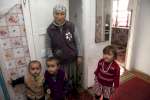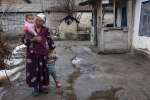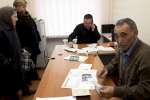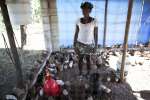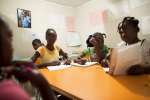Home > Search
Also on this site
- The Global Appeal, Supplementary Appeals and Response Plans
- Stateless People Figures
- Sudan country page
- Ending Statelessness
- Working with Partners
- Liberia country page
- Lebanon country page
- SURGE
- Central Europe regional page
- The Campaign to end Statelessness
- Africa regional page
- Latin America regional page
- Global Migration Group
- Americas regional page
- North America and the Caribbean regional page
- Reduction
- Refworld
- Is Statelessness a Problem?
- Stateless People
- Cameroon country page
- Colombia country page
- South-East Asia regional page
- Promoting Refugee Protection
- Who We Help
- Northern, Western, Central and Southern Europe regional page
- Europe regional page
- Burundi country page
- Kenya country page
- Angola country page
- Thailand country page
- South-Eastern Europe regional page
- Côte d'Ivoire country page
- South Africa country page
- High Commissioner's Dialogue on Protection Challenges, 2010
- Pakistan country page
- Causes of Statelessness
- Central Africa and the Great Lakes regional page
- Bosnia and Herzegovina country page
- Stateless - UNHCR Actions
- Council of Europe Conventions and Background Documents
- What is Statelessness?
- Prevention
- Statelessness in Europe
- State Action on Statelessness
- South Sudan country page
- Southern Africa regional page
- Central Asia regional page
- António Guterres (Portugal) 2005 - 2015
- Chad country page
- Eastern Europe regional page
- Identification
- Ministerial Meeting
- Guor Maker
- UN Conventions on Statelessness
- Who is Stateless and Where?
- The Brazil Declaration
- Asia and the Pacific regional page
- Rule of Law and Transitional Justice
- Brazil Plan of Action – One year of Implementation
- Brazil Plan of Action – One year of Implementation
- 30th Commemorative Anniversary of the Cartagena Declaration on Refugees
Statelessness: UNHCR Action to Address Statelessness
This Strategy Note provides a framework of action to address statelessness issues. Effective responses to statelessness require a partnership approach.
Ending Statelessness
Governments resolve and prevent statelessness by taking practical steps as set out in the Global Action Plan.
Statelessness Documents on Refworld
Documents highlighting good practices to address statelessness are available in Refworld
Is Statelessness a Problem?
The Campaign to End Statelessness in 10 years aims to spread awareness and change perceptions about statelessness.
#IBELONG

Sign and share our Open Letter to End Statelessness by 2024.
Statelessness Documents on Refworld
Documents highlighting good practices to address statelessness are available in Refworld
Statelessness: Forced Migration Review, Issue 32
This issue of FMR includes 22 articles by academic, international and local actors debating the challenges faced by stateless people and the search for appropriate responses and solutions. (external link)
Statelessness Determination Procedures and the Status of Stateless Persons
Summary conclusions of the expert meeting convened by UNHCR and the Open Society Justice Initiative, Geneva, Switzerland, 6-7 December 2010.
 Statelessness in the Kyrgyz Republic
Statelessness in the Kyrgyz Republic
UNHCR reports on the situation of stateless persons in the Kyrgyz Republic.
Statelessness: An Analytical Framework for Prevention, Reduction and Protection
This report provides a framework for analysing situations where persons are stateless or are at risk of becoming stateless.
Statelessness in Europe
UNHCR engages with EU Member States to identify and resolve the problems of stateless persons.
UN Conventions on Statelessness
The two UN statelessness conventions are the key legal instruments in the protection of stateless people around the world.
Stateless People
Millions of stateless people are left in a legal limbo, with limited basic rights.
Protection and Statelessness
- Back to Basics: The Right to Liberty and Security of Person and 'Alternatives to Detention' of Refugees, Asylum-Seekers, Stateless Persons and Other Migrants, Alice Edwards, April 2011
- UNHCR Brief on Statelessness and Detention Issues, 1997
- Robinson, Nehemiah: "Convention relating to the Status of Stateless Persons; Its History and Interpretation. A Commentary", 1955, re - printed by DIP in 1997
- The 1954 Convention relating to the Status of Stateless Persons: Implementation within the European Union Member States and Recommendations for Harmonisation
- Gyulai, Gábor: "Forgotten Without Reason: Protection of Non-Refugee Stateless Persons in Central Europe", Hungarian Helsinki Committee, April 2007
What is Statelessness?
Statelessness refers to the condition of someone who is not considered as a national by any country.
Causes of Statelessness
Important causes of statelessness are discrimination and gaps in nationality legislation.
 UNHCR and Statelessness
UNHCR and Statelessness
- Thousands of stateless people given nationality in Thailand
- Thousands of stateless people granted nationality in Thailand
- UNHCR Global Appeal 2016-2017 - Ending statelessness
- UNHCR Global Appeal 2016-2017 - States Parties to the Refugee and Statelessness Conventions
- Three new winners claim UNHCR Award for Best Research on Statelessness in 2015
A Special Report: Ending Statelessness Within 10 years
The Special Report provides a comprehensive overview of statelessness and delves into the human impact of this devastating phenomenon.
Videos on Statelessness
State Action on Statelessness
Action taken by states, including follow-up on pledges made at UNHCR's 2011 ministerial meeting in Geneva.
Reduction
Reduction of statelessness means finding a durable solution for people caught in statelessness situations.
 UNHCR Reporting on Statelessness
UNHCR Reporting on Statelessness
- UNHCR Global Report 2014 - Ending statelessness
- UNHCR Global Report 2014 - States Parties to the Refugee and Statelessness Conventions
- UNHCR Global Report 2013 - Addressing statelessness
- UNHCR Global Report 2013 - States Parties to the Refugee and Statelessness Conventions
- UNHCR Global Report 2012 - Addressing statelessness
 UNHCR Planning on Statelessness
UNHCR Planning on Statelessness
- UNHCR Global Appeal 2016-2017 - Ending statelessness
- UNHCR Global Appeal 2016-2017 - States Parties to the Refugee and Statelessness Conventions
- UNHCR Global Appeal 2015 Update - #IBELONG: campaign to end statelessness
- UNHCR Global Appeal 2015 Update - Ending statelessness
- UNHCR Global Appeal 2015 Update - Parties to the Refugee and Statelessness Conventions
Identification
Identification of statelessness goes far beyond acquiring statistics on stateless populations.
e-learning Course on Statelessness
This interactive and practical online course from UNHCR raises awareness of statelessness, its causes and consequences, and explains the relevant legal framework.
Final Report Concerning the Questionnaire on Statelessness Pursuant to the Agenda for Protection
Steps taken by States to reduce statelessness and to meet the protection needs of stateless persons.
Strengthening the International Legal Framework on Statelessness
Background to the statelessness expert meeting series.
Global Action Plan to End Statelessness: 2014-2024
The Global Action Plan sets out a clear and practical strategy comprised on 10 Actions which need to be undertaken to end statelessness in by 2024.
1961 Convention on the Reduction of Statelessness
The 1961 Convention is the leading international instrument that sets rules for the conferral and non-withdrawal of citizenship to prevent statelessness.
 UNHCR's Activities to Resolve Statelessness in Ukraine
UNHCR's Activities to Resolve Statelessness in Ukraine
- Beyond Borders: Bulletin No. 5 of the UNHCR in Ukraine
- Evaluation of UNHCR's programme to prevent and reduce statelessness in Crimea, Ukraine
- Overview of UNHCR's Citizenship Campaign in Crimea
- Social Assessment of the Formerly Deported Population in the Autonomous Republic of Crimea: A Participatory Rapid Appraisal, European Series, Vol.4, No.1
 General Assembly Resolutions Relating to Statelessness
General Assembly Resolutions Relating to Statelessness
Adopted by the United Nations General Assembly between 1974 and 2007.
- Office of the United Nations High Commissioner for Refugees: Resolution adopted by the General Assembly - Extracts relating to statelessness
- Office of the United Nations High Commissioner for Refugees: Resolution adopted by the General Assembly - Extracts relating to statelessness
- Nationality of natural persons in relation to the succession of States
- Nationality of natural persons in relation to the succession of States
- Office of the United Nations High Commissioner for Refugees: Resolution adopted by the General Assembly - Extracts relating to statelessness
Forced Migration Review mini-feature on statelessness
This mini-feature was published as part of Forced Migration Review issue 46.
Civil Registration and the Prevention of Statelessness: A Survey of Roma, Ashkaelia and Egyptians (RAE) in Montenegro
Results of a study carried out in 2008 by UNHCR, with support from the European Commission and UNICEF, May 2009.
Statistics on Stateless Persons
Chapter from UNHCR Statistical Yearbook 2014 on the issue of statelessness and table of statistics on persons of concern to UNHCR.
 Regional and Country Studies on Statelessness
Regional and Country Studies on Statelessness
- Statelessness in Central Asia, by Marjorie Farquharson, May 2011
- Discussion Paper: Regional Expert Roundtable on Good Practices for the Identification, Prevention and Reduction of Statelessness and the Protection of Stateless Persons in South East Asia
- Good Practices: Addressing Statelessness in South East Asia. Report of the Regional Expert Roundtable
- Meeting Report: Regional Expert Meeting on the Human Rights of Stateless Persons in the Middle East and North Africa
- Citizenship Law in Africa: A Comparative Study, by Bronwen Manby
Concept Note
A Campaign to End Statelessness launched on the 60th Anniversary of the 1954 Convention relating to the Status of Stateless Persons.
Conclusion on Identification, Prevention and Reduction of Statelessness and Protection of Stateless Persons
Conclusion No. 106 (LVII) - 2006, adopted at the 57th Executive Committee session.
UNHCR's Role and Activities in Relation to Statelessness
An evaluation by UNHCR's Evaluation and Policy Analysis Unit, July 2001.
 All Notes and Progress reports on UNHCR's statelessness activities
All Notes and Progress reports on UNHCR's statelessness activities
- Note on statelessness
- Note on international protection: Addendum - Note on statelessness, Executive Committee, 62nd session
- Progress Report on Statelessness 2009
- Statelessness: Prevention and Reduction of Statelessness and Protection of Stateless Persons: Follow-up Paper
- Statelessness: Prevention and Reduction of Statelessness and Protection of Stateless Persons: Follow-up Paper
UNHCR launches 10-year global campaign to end statelessness
Press release published on 4 November 2014
Background Note on Gender Equality, Nationality Laws and Statelessness 2014
This annual Background Note provides an overview of gender inequality in nationality laws and the growing willingness and commitment by States to take action to achieve gender equality.
Prevention
The easiest and most effective way to deal with statelessness is to prevent it from occurring in the first place.
Background on Gender Discrimination
- Displacement, Statelessness and Questions of Gender Equality under the Convention on the Elimination of All Forms of Discrimination against Women, Alice Edwards
- OHCHR project on a mechanism to address laws that discriminate against women (external link)
- International Law Association, "Final Report on Women's Equality and Nationality in International Law", London Conference (2000), Committee on Feminism and International Law
Convention relating to the Status of Stateless Persons; Its History and Interpretation
A Commentary by Nehemiah Robinson of the Institute of Jewish Affairs at the 1955 World Jewish Congress, re-printed by UNHCR's Division of International Protection in 1997
Birth Registration
Birth registration helps to protect persons of concern and to prevent statelessness.
Working with Partners
We work with governments, civil society and aid organizations to address statelessness.
Global Roundtable on Alternatives to Detention of Asylum-Seekers, Refugees, Migrants and Stateless Persons
Summary Conclusions of the first Global Roundtable on Alternatives to Detention, held in May 2011 in Geneva
Introductory remarks by the UNHCR Director of International Protection to the International Meeting on Refugee Protection, Statelessness and Mixed Migration Movements in the Americas
Launch of the UNHCR Commemorations in the Americas, Brasilia, Brazil, 11 November 2010, in Portuguese and Spanish.
IPU Statement to 124th Assembly
IPU statement to mark major anniversaries of UN conventions on refugees and statelessness.
Gender Discrimination in Nationality Laws
Arbitrary Deprivation of Nationality
State Succession
- Draft articles on nationality of natural persons in relation to the succession of States with commentaries adopted by the International Law Commission
- Council of Europe Convention on the avoidance of statelessness in relation to State succession
- Explanatory Report on the Council of Europe Convention on the avoidance of statelessness in relation to State succession (external link)
1954 Convention relating to the Status of Stateless Persons
The 1954 Convention provides the definition of a "stateless person" and the foundation of the international legal framework to address statelessness.
UN Committee on the Elimination of Discrimination Against Women (CEDAW)
CEDAW Statement on the Anniversaries of the 1951 Convention Relating to the Status of Refugees and the 1961 Convention on the Reduction of Statelessness, 19 October 2011.
Conventions
Statelessness Around the World
At least 10 million people in the world today are stateless. They are told that they don't belong anywhere. They are denied a nationality. And without one, they are denied their basic rights. From the moment they are born they are deprived of not only citizenship but, in many cases, even documentation of their birth. Many struggle throughout their lives with limited or no access to education, health care, employment, freedom of movement or sense of security. Many are unable to marry, while some people choose not to have children just to avoid passing on the stigma of statelessness. Even at the end of their lives, many stateless people are denied the dignity of a death certificate and proper burial.
The human impact of statelessness is tremendous. Generations and entire communities can be affected. But, with political will, statelessness is relatively easy to resolve. Thanks to government action, more than 4 million stateless people acquired a nationality between 2003 and 2013 or had their nationality confirmed. Between 2004 and 2014, twelve countries took steps to remove gender discrimination from their nationality laws - action that is vital to ensuring children are not left stateless if their fathers are stateless or unable to confer their nationality. Between 2011 and 2014, there were 42 accessions to the two statelessness conventions - indication of a growing consensus on the need to tackle statelessness. UNHCR's 10-year Campaign to End Statelessness seeks to give impetus to this. The campaign calls on states to take 10 actions that would bring a definitive end to this problem and the suffering it causes.
These images are available for use only to illustrate articles related to UNHCR statelessness campaign. They are not available for archiving, resale, redistribution, syndication or third party licensing, but only for one-time print/online usage. All images must be properly credited UNHCR/photographer's name
Statelessness Around the World
Statelessness in Kyrgyzstan
Two decades after the disintegration of the Soviet Union, thousands of people in former Soviet republics like Kyrgyzstan are still facing problems with citizenship. UNHCR has identified more than 20,000 stateless people in the Central Asian nation. These people are not considered as nationals under the laws of any country. While many in principle fall under the Kyrgyz citizenship law, they have not been confirmed as nationals under the existing procedures.
Most of the stateless people in Kyrgyzstan have lived there for many years, have close family links in the country and are culturally and socially well-integrated. But because they lack citizenship documents, these folk are often unable to do the things that most people take for granted, including registering a marriage or the birth of a child, travelling within Kyrgyzstan and overseas, receiving pensions or social allowances or owning property. The stateless are more vulnerable to economic hardship, prone to higher unemployment and do not enjoy full access to education and medical services.
Since independence in 1991, Kyrgyzstan has taken many positive steps to reduce and prevent statelessness. And UNHCR, under its statelessness mandate, has been assisting the country by providing advice on legislation and practices as well as giving technical assistance to those charged with solving citizenship problems. The refugee agency's NGO partners provide legal counselling to stateless people and assist them in their applications for citizenship.
However, statelessness in Kyrgyzstan is complex and thousands of people, mainly women and children, still face legal, administrative and financial hurdles when seeking to confirm or acquire citizenship. In 2009, with the encouragement of UNHCR, the government adopted a national action plan to prevent and reduce statelessness. In 2011, the refugee agency will help revise the plan and take concrete steps to implement it. A concerted effort by all stakeholders is needed so that statelessness does not become a lingering problem for future generations.
Statelessness in Kyrgyzstan
Statelessness in the Dominican Republic
In the Dominican Republic, UNHCR runs programmes that benefit refugees and asylum-seekers from Haiti as well as migrants and members of their family born in the country, some of whom could be stateless or at risk of becoming stateless. Many live in bateyes, which are destitute communities on once thriving sugar cane plantations. The inhabitants have been crossing over from Haiti for decades to work in the sugar trade.
Among these initiatives, UNHCR provides legal aid, academic remedial courses and vocational training for refugees and asylum-seekers. They also support entrepreneurial initiatives and access to micro credit.
UNHCR also has an increased presence in border communities in order to promote peaceful coexistence between Dominican and Haitian populations. The UN refugee agency has found that strengthening the agricultural production capacities of both groups promotes integration and mitigates tension.
Many Haitians and Dominicans living in the dilapidated bateyes are at risk of statelessness. Stateless people are not considered as nationals by any country. This can result in them having trouble accessing and exercising basic rights, including education and medical care as well as employment, travel and housing. UNHCR aims to combat statelessness by facilitating the issuance of birth certificates for people living in the bateyes.
Statelessness in the Dominican Republic















